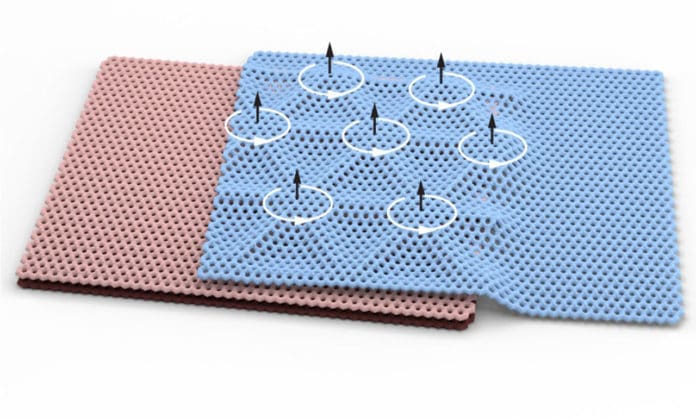Recently, scientists from Columbia University and the University of Washington have discovered that Stacking and twisting a three-layer graphene structure could unlock a variety of exotic electronic states, including a rare form of magnetism.
The work was inspired by recent studies of twisted monolayers or twisted bilayers of graphene, comprising either two or four total sheets. These materials were found to host an array of unusual electronic states driven by strong interactions between electrons.
Cory Dean, a physics professor at Columbia University, said, “We wondered what would happen if we combined graphene monolayers and bilayers into a twisted three-layer system. We found that varying the number of graphene layers endows these composite materials with some exciting new properties that had not been seen before.”
For the study, scientists stacked a monolayer sheet of graphene onto a bilayer sheet and twisted them by about 1 degree. At temperatures a few degrees over absolute zero, the group array of insulating states—which don’t lead power-driven by solid associations between electrons. They additionally found that these states could be controlled by applying an electric field over the graphene sheets.
Assistant Professor Matthew Yankowitz said, “We learned that the direction of an applied electric field matters a lot.”
Pointing the electric field toward the monolayer graphene sheet resulted in twisted bilayer graphene. When scientists flipped the electric field’s direction and pointed it toward the bilayer graphene sheet, it mimicked twisted double bilayer graphene—the four-layer structure.
The team also discovered new magnetic states in the system. In addition to the magnetism, the study uncovered signs of topology in the structure. Akin to tying different types of knots in a rope, the material’s topological properties may lead to new forms of information storage, which “may be a platform for quantum computation or new types of energy-efficient data storage applications.
Professor Xiaodong Xu said, “Akin to tying different types of knots in a rope, the topological properties of the material may lead to new forms of information storage, which “may be a platform for quantum computation or new types of energy-efficient data storage applications.”
Scientists are currently busy with understanding the fundamental properties of the new states they discovered.
Journal Reference:
- Electrically tunable correlated and topological states in twisted monolayer–bilayer graphene, Nature Physics (2020). DOI: 10.1038/s41567-020-01062-6
